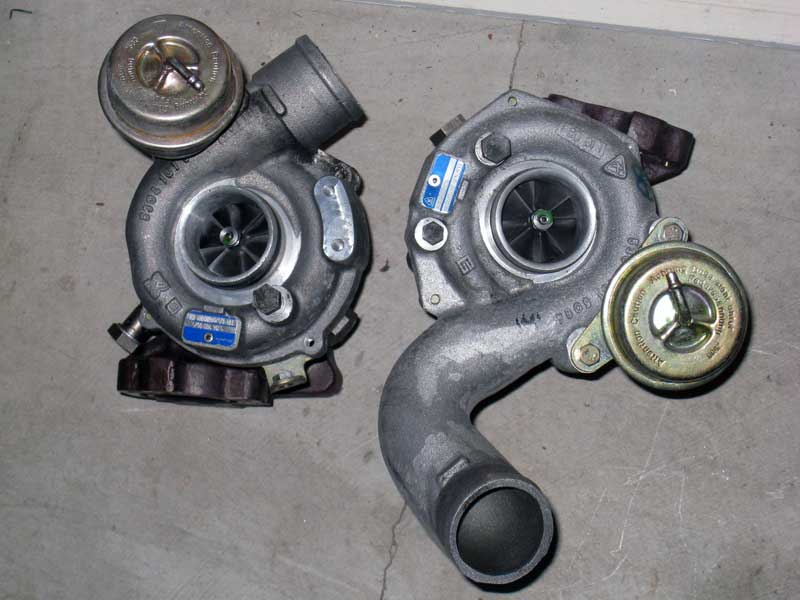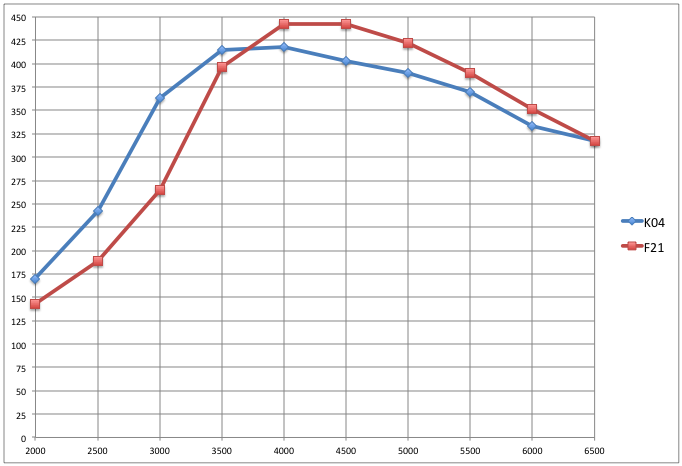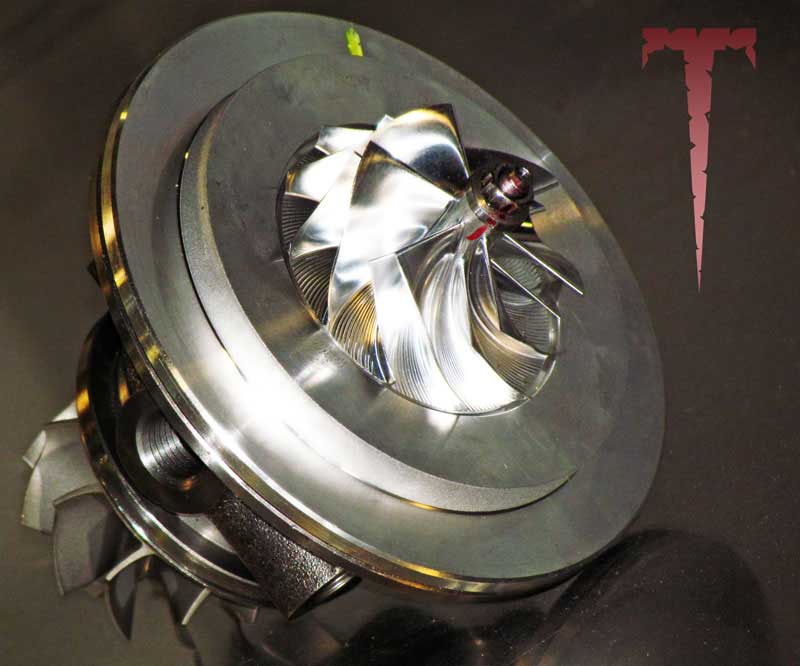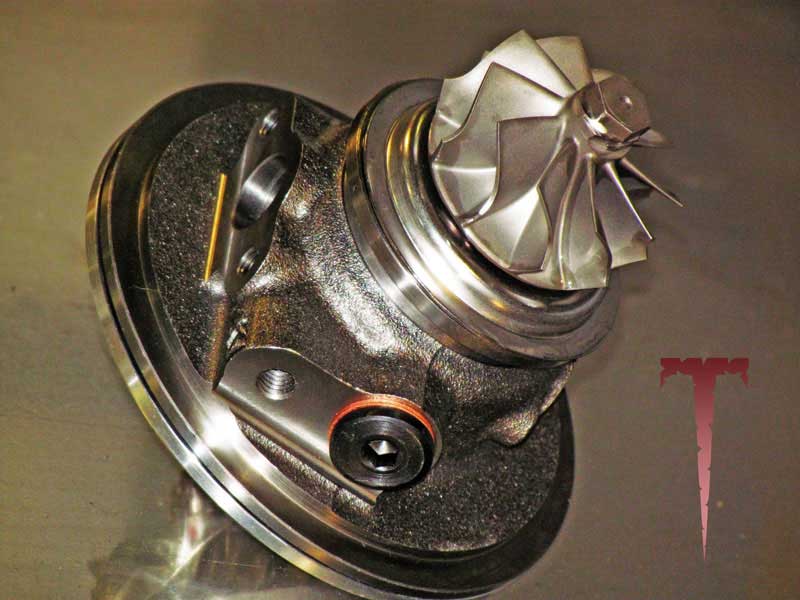Why compare FrankenTurbo vs K04?
The FrankenTurbo F21 and BorgWarner K04 are two turbochargers I am considering using on my Audi B5 S4.
Products:
The FrankenTurbo F21 and BorgWarner K04 turbochargers are competing products available to owners of the Audi B5 S4. The question of FrankenTurbo vs K04 is a common one facing B5 S4 owners looking to upgrade their car from the stock K03 turbochargers. While the two products are similar, there are some important differences that can influence the decision making process.
Contained below is a summary of information I have collected on the two products and my opinions on how to answer the FrankenTurbo vs K04 question.
Comparisons:
The BorgWarner K04 that is used as an upgrade for the B5 S4 is borrowed from the Audi B5 RS4, a vehicle that was not available to the North American market when it was in production. The BW K04 has been a popular upgrade for the S4 for a number of years with some of the first upgrade kits based on the K04 being released around 2002.

Anecdotal evidence over the intervening years has shown the K04’s to be a reliable turbocharger even while being operated at higher boost pressures than originally run at on the B5 RS4.
The FrankenTurbo F21 has been available to the 2.7T motor equipped Audi’s for approximately 3 years, as of early 2015, and was a follow-on to the FrankenTurbo F4H-BT. Over the limited time that the F21 has been in service it has proven to be a reliable product as well.

Delivered from FrankenTurbo with a 2 year warranty, I feel the product backing from FrankenTurbo is better than would be provided by vendors of the BorgWarner K04.
Specifications:
The primary difference between the Frankenturbo and K04 is with the compressor wheel. The BW K04 uses a 40/51 inducer/exducer and the FT21 uses a 42.6/56.3 inducer/exducer. The larger wheel of the FT21 allows it to push more air, so that as rpm’s increase the FT21 is able to maintain higher boost pressure with the increasing airflow, relative to the BW K04.
The flip side to having a larger compressor wheel is a greater moment of inertia, which results in boost pressure rising more slowly initially compared to the K04.
On the turbine, hot side, of the turbocharger the differences between the FT21 and BW K04 are relatively minor and unlikely to have noticeable affect on performance of the FrankenTurbo vs K04.
Observed Results:
Generating comparison data for a pair of turbochargers is a challenging task. It is extremely rare for a car to be tested with one set of turbochargers and then to be retested with all of the same components and under the same conditions, except with a change made only to the turbocharger in use.
Comparisons between two vehicles, one with FT21’s and another with BW K04’s, introduces many opportunities to mistakenly attribute other component differences for turbocharger differences.
To try and minimize the influence of outside factors a couple of approaches can be taken. The first is to try and record performance characteristics that are less likely to be influenced by multiple factors. For instance, rather than comparing the dynamometer numbers produced by two cars, or FATS time, boost pressure versus rpm can be recorded.
Results of my dyno session with the FrankenTurbo F21 can be found on this post.
A second way to minimize variations caused by specific vehicles is to aggregate the results of multiple cars, to get an average for comparison. In the chart below I have taken the results from four K04 tuned car dyno’s and averaged the results. Similarly I have averaged the wheel torque results from a pair of F21 equipped cars.
Unfortunately, only having two FrankenTurbo equipped cars to evaluate is not enough – one car having a bad day, bad tune, whatever can dramatically skew the results. I believe the result shown below, where the two lines converge near 6500 rpm is testament to this. An F21 equipped car should be capable of producing higher wheel torque values at high rpm versus a K04 equipped car, but with only two samples to look at it is difficult to make a confident conclusion about how they compare.

Conclusions:
Based on the limited data I have been able to find on the FrankenTurbo F21 my assessment for how the FrankenTurbo vs K04 question plays out is as follows.
The K04’s spool up faster, this does not come as a surprise because the K04’s utilize a smaller compressor wheel that has a smaller moment of inertia. The wheel torque chart illustrates the end result of this difference, showing the K04’s producing more torque below 3500 rpm.
The larger wheel of the F21 enables the FrankenTurbo to flow more air at higher boost levels and once the F21 is up to speed this advantage shows, at 3500 rpm the F21 overtakes the K04 and maintains the advantage to the end of the recorded data.
I would have expected the F21 to display a greater advantage at higher rpm’s. Two possible explanations for why the data I have does not shown a greater difference are:
- There are only two data points for the FrankenTurbo F21 and this is not sufficient to capture how the turbochargers are able to perform.
- The K04 size turbine housing used by the F21 causes a restriction at high flow rates that limits the wheel torque to no greater than what a K04 can produce. While the F21 may have a larger compressor wheel the potential flow capacity cannot be realized due to limitations of the turbine and housing.
Going forward:
Possibly more data on the FrankenTurbo F21’s will become available to help clear up the question of how they perform. As of this writing FrankenTurbo is working on prototype updates to the F21 that bring a new billet compressor wheel and a mixed flow turbine wheel to the table and it should be interesting to see how they perform.


